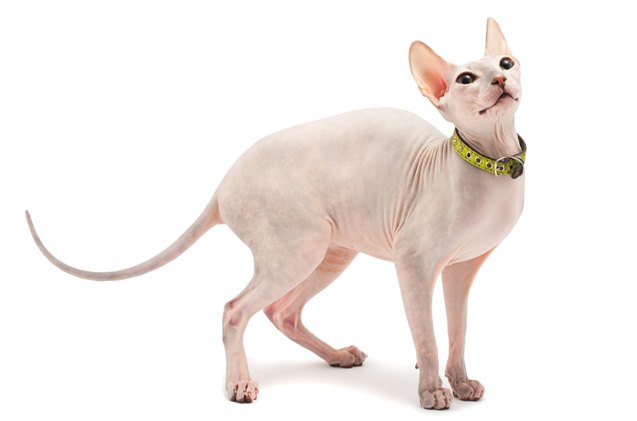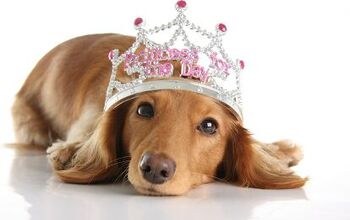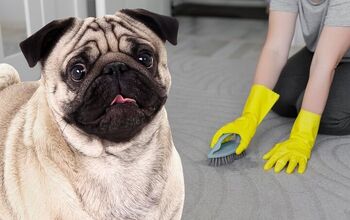Don Hairless


About Don Hairless
The Don Hairless is also known as the Don Sphinx or the Donskoy. Russian in origin, these hairless cats date to the 1987 discovery of a hairless specimen in Rostov-on-Don by breeder Elena Kovaleva. This breed’s lack of fur can be traced to a dominant gene, therefore they are not related to the better known hairless Sphynix, which is derived from a recessive gene. Through selective breeding, the Don Hairless became sufficiently well established to be recognized by the World Cat Federation in 1997 and then by the International Cat Association in 2005.
A friendly, intelligent, and loving cat, the Don Hairless exhibits an active curiosity about its surroundings.
A friendly, intelligent, and loving cat, the Don Hairless exhibits an active curiosity about its surroundings. These cats entertain themselves well, making up their own games, and expressing their frisky playfulness with or without toys. With their owners, Dons are affectionate, loyal, and easily handled, displaying little upset even when subjected to nail trimming or injections at the vet’s. Basically, as long as these cats are part of whatever is going on, they’re happy. Unlike many cats, they respond well to voice commands and easily amass a working vocabulary. They do not do well when left alone for long periods of time because they have a high need for social interaction.
A medium-long cat in build, the Don Hairless is a muscular and hard cat, nowhere near as delicate as it may appear. These cats have a deep groin line accentuating their round abdomens. This “fatty belly” tends to get ample during the winter months, and slim up in warmer weather. The front legs are shorter, and the overall body contour is pear shaped. The oval feet feature slender toes with “thumbs” bent inward rather than down, making these cats almost look as if they have hands. Their ears are quite large and open, standing alert and erect over almond-shaped eyes. A Don’s skin will feel like warm velvet to the touch with pronounced wrinkles under the cat’s chin and around the cheeks and jowls. Additional wrinkles are present between the ears and down the forehead, as well as in the breast area, under the legs, at the base of the tail, and around the belly. The long, straight tail narrows to a slender tip.
The Don Hairless is found in all color variations. The listed coat types include Rubber Bald, Brush, Velour, and Flocked. They are born with a coat that falls out within 2 months to 2 years. Some cats will actually grow fine wool on their chest and at the end of their tail in winter.
The Don Hairless has special grooming needs. Their skin is easily damaged by the sun, so they cannot be left outdoors. In an odd quirk, however, their skin, like a human’s, will tan. They will sweat, and are subject to the build-up of oil on their skin, which can be transferred to furniture and other surfaces. These cats should be bathed once a week, and their ears must be cleaned on the same schedule. Fortunately, they enjoy water, and will play happily while they are being bathed.
Photo credit: Vladyslav Starozhylov/Shutterstock

Amy Tokic, Editor of PetGuide.com, is a passionate animal lover and proud pet parent of Oscar, a Shih Tzu/Chihuahua cross, and Zed, a Japanese Chin. Her love of animals began in kindergarten, when she brought her stuffed dog Snoopy into class with her every day. Now, she writes about her adventures in pet ownership and tirelessly researches products, news and health related issues she can share with other animal enthusiasts. In her free time, Amy loves perusing used book and record stores, obsessing over the latest pet products available and chasing squirrels with wild abandon (a habit attributed to spending too much time with her pooches).
More by Amy Tokic

























